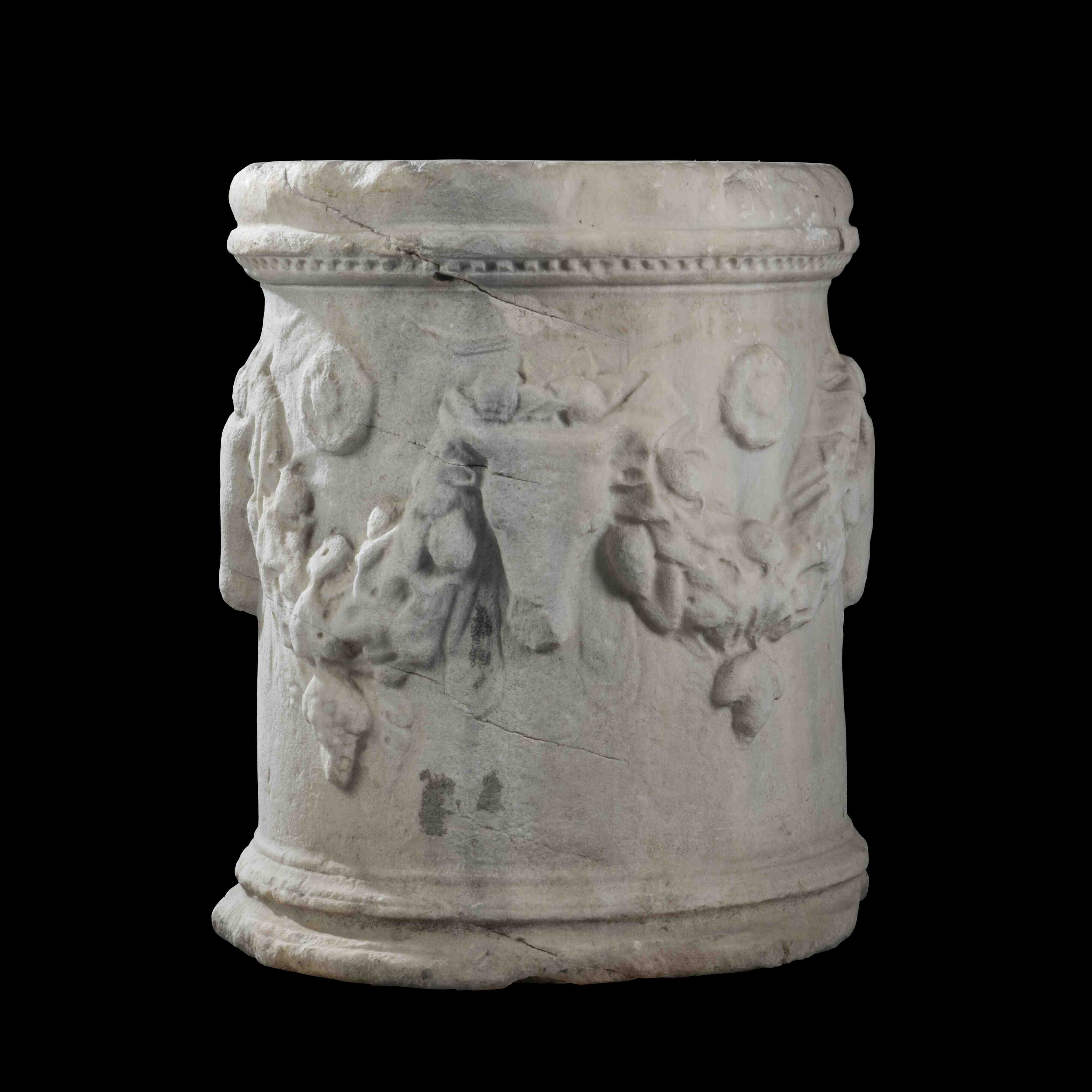The statue is larger than life-size and stands with its weight on its right leg. The sandal on the woman’s right foot emerges from beneath the folds of her chiton. The left leg is bent and slightly further forward. She is dressed in two distinct layers: first, her buttoned chiton, which is secured along the sleeve of her right arm and falls to the floor with plunging, vertical folds. Secondly, her peplos, which is held by thin straps over her shoulders, extends below her knees, exposing the right breast, while deep folds cascade beside her.
Note
Portrait statues of women began to appear in the fourth century BC in Athens, and became increasingly popular until they were a common votive dedication in the Hellenistic period. The growth of the representation of female portrait statues highlights the significant role that women played in Greek society. Generally, the statues were established as part of a larger family, usually dedicated by their closest male relatives.
The typical dress of female statues adheres to the Classical sculptural tradition of the fourth century BC. They are composed of two or three pieces of clothing: the chiton, a long tunic which hangs down and covers most of the feet, and the himation, a light silk or linen mantle draped around the body and over the tunic. Few statues wear the third piece, the peplos, a thick mantel, which is normally worn over the chiton and secured at the chest or waist. Most of the female statues are wearing a himation over the chiton. Usually, the mantle covers most of the tunic and wraps most of the body, while in other cases, the arms are uncovered and the tunic is visible at the chest and around the legs.
The format and style of our marble sculpture, which clearly has its roots in fourth-century imagery, combines the traditional short-sleeved, ankle-length tunic with, in this case, a mantle draped diagonally across the chest. Here, the folds at the top of the mantle cross the body in a diagonal line from the right waist to the left shoulder. The arms of statues in this format were typically bent perpendicular to the body and held in a open pose. This kind of depiction is used for a variety of female figures in late Classical and Hellenistic sculpture, and a very close parallel to our sculpture is the statue of a draped woman from Kos (Kos Museum inv. 20).












